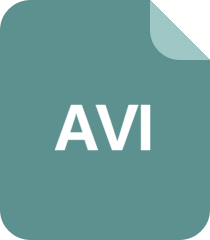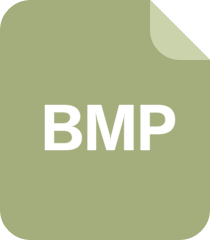========================================================================
MICROSOFT FOUNDATION CLASS LIBRARY : T3DSystem
========================================================================
AppWizard has created this T3DSystem application for you. This application
not only demonstrates the basics of using the Microsoft Foundation classes
but is also a starting point for writing your application.
This file contains a summary of what you will find in each of the files that
make up your T3DSystem application.
T3DSystem.dsp
This file (the project file) contains information at the project level and
is used to build a single project or subproject. Other users can share the
project (.dsp) file, but they should export the makefiles locally.
T3DSystem.h
This is the main header file for the application. It includes other
project specific headers (including Resource.h) and declares the
CT3DSystemApp application class.
T3DSystem.cpp
This is the main application source file that contains the application
class CT3DSystemApp.
T3DSystem.rc
This is a listing of all of the Microsoft Windows resources that the
program uses. It includes the icons, bitmaps, and cursors that are stored
in the RES subdirectory. This file can be directly edited in Microsoft
Visual C++.
T3DSystem.clw
This file contains information used by ClassWizard to edit existing
classes or add new classes. ClassWizard also uses this file to store
information needed to create and edit message maps and dialog data
maps and to create prototype member functions.
res\T3DSystem.ico
This is an icon file, which is used as the application's icon. This
icon is included by the main resource file T3DSystem.rc.
res\T3DSystem.rc2
This file contains resources that are not edited by Microsoft
Visual C++. You should place all resources not editable by
the resource editor in this file.
/////////////////////////////////////////////////////////////////////////////
For the main frame window:
MainFrm.h, MainFrm.cpp
These files contain the frame class CMainFrame, which is derived from
CFrameWnd and controls all SDI frame features.
res\Toolbar.bmp
This bitmap file is used to create tiled images for the toolbar.
The initial toolbar and status bar are constructed in the CMainFrame
class. Edit this toolbar bitmap using the resource editor, and
update the IDR_MAINFRAME TOOLBAR array in T3DSystem.rc to add
toolbar buttons.
/////////////////////////////////////////////////////////////////////////////
AppWizard creates one document type and one view:
T3DSystemDoc.h, T3DSystemDoc.cpp - the document
These files contain your CT3DSystemDoc class. Edit these files to
add your special document data and to implement file saving and loading
(via CT3DSystemDoc::Serialize).
T3DSystemView.h, T3DSystemView.cpp - the view of the document
These files contain your CT3DSystemView class.
CT3DSystemView objects are used to view CT3DSystemDoc objects.
/////////////////////////////////////////////////////////////////////////////
Other standard files:
StdAfx.h, StdAfx.cpp
These files are used to build a precompiled header (PCH) file
named T3DSystem.pch and a precompiled types file named StdAfx.obj.
Resource.h
This is the standard header file, which defines new resource IDs.
Microsoft Visual C++ reads and updates this file.
/////////////////////////////////////////////////////////////////////////////
Other notes:
AppWizard uses "TODO:" to indicate parts of the source code you
should add to or customize.
If your application uses MFC in a shared DLL, and your application is
in a language other than the operating system's current language, you
will need to copy the corresponding localized resources MFC42XXX.DLL
from the Microsoft Visual C++ CD-ROM onto the system or system32 directory,
and rename it to be MFCLOC.DLL. ("XXX" stands for the language abbreviation.
For example, MFC42DEU.DLL contains resources translated to German.) If you
don't do this, some of the UI elements of your application will remain in the
language of the operating system.
/////////////////////////////////////////////////////////////////////////////
亚傲智慧
- 粉丝: 137
- 资源: 559
最新资源
- Matlab下的轴承全寿命信号处理与特征提取:基于PHM2012数据集的时域频域分析,Matlab下的轴承全寿命信号处理与特征提取:基于PHM2012数据集的时域频域分析,matlab轴承全寿命信号处
- Maxwell与Simplorer联合仿真:永磁同步电机SVPWM控制详解与实战教程,Maxwell与Simplorer联合仿真:永磁同步电机SVPWM控制详解与实战教程,Maxwell和Simplo
- c语言在链表的末尾插入一个节点
- 开关频率可调的永磁同步电机SVPWM发电仿真模型:多参数动态调节下的电源表现及优化探索,开关频率可调的永磁同步电机SVPWM发电仿真模型:多维度参数调整,精准设计母线电容,实时观察输出纹波大小,开关频
- c语言给定一个链表,任务是在这个给定的链表中的以下位置插入一个新节点
- 蓝桥杯嵌入式 停车收费系统相关代码 2021省赛-蓝桥杯资源
- 永磁同步电机三闭环控制Simulink仿真详解:电流内环与转速、位置外环的原理与参数调优,永磁同步电机三闭环控制Simulink仿真详解:电流内环与转速、位置外环调控原理及参数调优指南,永磁同步电机三
- 基于元胞自动机的城市开发边界增长模拟:解析繁殖、扩散与传播参数,结合对流作用影响枝晶生长模拟,C++程序实现任意角度偏心正方算法,基于元胞自动机的城镇开发边界增长模拟:研究元胞元素与枝晶生长模拟实现过
- Scratch素材-scratch资源
- carbon-golang资源
- c语言给定一个链表,任务是在这个给定的链表中的以下位置插入一个新节点
- obsidian-101tool-春节主题资源
- Maxwell与Simplorer联合仿真:永磁同步电机SVPWM控制详解及实践教程,Maxwell与Simplorer联合仿真:永磁同步电机SVPWM控制详解及实践教程,Maxwell和Simplo
- blog-javaEE框架项目资源
- 三相锁相环(SRF-PLL)并网逆变器仿真搭建及其仿真结果分析与验证:Matlab Simulink仿真实践报告与参考文献资源汇总,基于三相锁相环SRF-PLL并网逆变器的Matlab Simulin
- 感应电机故障检测与Matlab Simulink仿真解析:波形记录、仿真原理及文献指南,感应电机故障检测Matlab Simulink仿真解析及原理解释与波形记录参考,感应电机故障检测 Matlab
资源上传下载、课程学习等过程中有任何疑问或建议,欢迎提出宝贵意见哦~我们会及时处理!
点击此处反馈


















